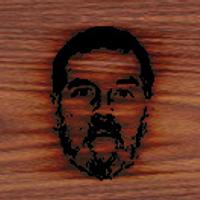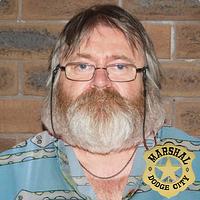Share your craft projects
Make new craft buddies
Ask craft questions
Blog your craft journey

Mike_190930
43 posts
and
4 followers
in almost 3 years
in almost 3 years
Hawaiian Style Chair
The Finds
Some projects come together as a confluence of accidental planning, and sometimes the story of how it came together is as satisfying as the actual build. This project was one of those.
A few years ago I acquired a table top from a contractor that salvaged it from a 70’s era Tiki bar that went out of business. The top was 30” x 40” x 1.5” thick – and made from solid Koa Wood! To the contractor it was a few dollars on the side for trash; to me it was solid gold. But it sat in the shop for a couple of years, mostly getting in the way because of its bulk, while I looked for a suitable use for such a treasure.
Then in my wanderings on the web I found Tai Lake’s wonderful web site, and on it his elegantly designed Watcher Chair, in solid Koa Wood. I knew immediately I had to attempt making that design myself, but a 30”x40” slab just did not have enough lumber in it, especially so for the soaring 54” back legs. I shelved the project, time passed, and it faded from memory.
A month later, while looking on Craig’s List for another used tool I probably didn’t need, I saw a table advertised for sale. That table had what for all the world looked like a Koa Wood slab top, 60” long. Foggy memories instantly cleared; I bought the table that afternoon. After ditching the steel legs I finally had enough lumber to make a copy of Tai’s chair.
A month later, while looking on Craig’s List for another used tool I probably didn’t need, I saw a table advertised for sale. That table had what for all the world looked like a Koa Wood slab top, 60” long. Foggy memories instantly cleared; I bought the table that afternoon. After ditching the steel legs I finally had enough lumber to make a copy of Tai’s chair.

My Version, Completed
The Build
Starting with the raw slabs, I made paper templates of all the pieces. After several alternative arrangements, I ended up with the one shown here. Places with irretrievably damaged screw holes or punky wood were avoided. Other parts were placed to select the best or matching color and grain.
Raw Table Top Slabs
First, I cut along the Koa slab glue lines to extract the pieces that were originally glued together to make the table top. This prevented incorporating any old glue lines and allowed me to place each component of the chair on a single solid piece of lumber.
Chair Parts Layout
I chose to use floating tenons for the joinery in order to allow a bit more flexibility in the parts layout; that’s why you don’t see any allowance here for tenons. Having arrived at a satisfactory layout, the parts were rough cut on the band saw. I kept as many of them as possible in square billet form to ease the task of cutting mortices or re-sawing later on.
Two major elements of the chair design called for bent wood pieces, namely the back and the bottom ‘rail’. The width of both pieces was larger than my 6” steam bending pipe, so I opted instead for bent laminations. Each piece required a bending form and re-sawing. I used the CNC to cut the bending forms from MDF. All in all, it took a full ¾” thick sheet of the stuff. I now loathe MDF as much as I treasure Koa Wood; it is heavy to handle and messy beyond belief to cut. I will be vacuuming up MDF dust for the next decade. Never. Ever. Again.

CNC Cutting the Large Form Rough CNC Cut Base and Sides Small Form

Short Board Form under Construction In the Clamps

Final Bent Boards & Long Form.
The tenon shaped into the front
end of the bottom 'rail' (short piece)
is visible.
The stock for the two bent pieces was re-sawn into five each pieces for the long back board, and four each pieces for the shorter rail. Each laminate was left about 1/16 inch thicker than the final thickness, and run through the drum sander to get to 0.15” for the long board (total thickness ¾ ” ) and 1/8” for the short board (total thickness ½ “ ). The stock board was run through the planer after each re-saw pass to get a smooth surface for the next laminate cut.
The laminates were first soaked in water for a few minutes, and then assembled without glue and clamped in the forms overnight. This minimized spring back later. I used clear polyurethane glue (clear Gorilla Glue, non-foaming) to glue the laminates together prior to clamping in the bending forms for a second time. The residual moisture in the wood helped cure the glue. Polyurethane glue creeps far less than the traditional PVA glues, so the piece holds its shape better over the long run. All totaled, I spent more time on the two bent pieces than the entire rest of the project.
Legs and Frame
Mortices were milled on the horizontal CNC into all pieces needing them. The trickiest bit of these operations is making sure that the piece is perfectly aligned to the CNC so the mortice is cut accurately. That could be the subject of another complete blog entry. The floating tenons were cut from hard maple and the edges of the stock run through a rounding bit on the router table. This avoided having to square the corners of the mortices with chisels, a difficult operation in end grain to say the least. Finally, each piece was shaped on the band saw, sanded on the oscillating drum sander, and the edges rounded over on the router table. (Side note: the former bar table Koa Wood smelled of soap and cleaners during cutting and sanding.)
After the glue up, shown below, a lot of carving, rasping, and hand sanding went into smoothing the joints between the rails and legs. All parts were sanded to 220g and polished with 0000 steel wool before gluing, and again after the joints were smoothed out post glue up. Finally, the corner block style seat mounts were attached, and the seat pan (CNC cut ½” plywood) fitted with 10- 24 tee nuts. The bent back and bent rail were positioned and marked for trimming. Attachment to the frame is with a pair of 3/8” dowels each top and bottom.

Frame In the Clamps

Rear Leg Joint Smoothed Front Leg Joint Detail
The pieces were treated with a single coat of water based mixed yellow/cherry stain and lightly re-sanded with 220 grit and polished with 0000 steel wool before glue up. Any areas that were sanded post gluing were re-stained and re-sanded to match. Finish is one coat shellac followed by three coats of Minwax Tung oil poly varnish, all wiped on with a lint-free cloth.
I’ll not go into the upholstery other than to say I might be improving a bit there, but still much to be desired. At least the seat can be replaced in future.
Now, the more observant among you may have noticed that the back legs and back are not like the other parts. That is because what I thought was a Koa Wood table top (the Craig’s list piece) was actually a cleverly stained slab of walnut. But the color and grain were so close to the Koa Wood, I decided to ‘forge’ ahead nevertheless.
Huh? Whadaya mean it ain't "measure once cut twice"?
3 Comments
Really nice write up! Well done and thank you for the detail you provide!
Ryan/// ~sigh~ I blew up another bowl. Moke told me "I made the inside bigger than the outside".

I keep saying to people... WHAT is nice... but HOW is better. I can admire a what, but can only learn from a how...
Thanks for the post.
If your first cut is too short... Take the second cut from the longer end... LBD
Excellent write up and a beautiful chair! The wood colors play together very nicely.











